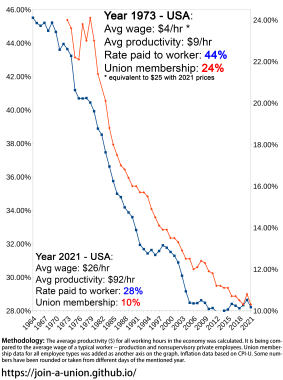There's a steep decline in pay compared to the value workers add to the economy, closely tracking the fall in union membership. ( lemmy.world )


You are only browsing one thread in the discussion! All comments are available on the post page.